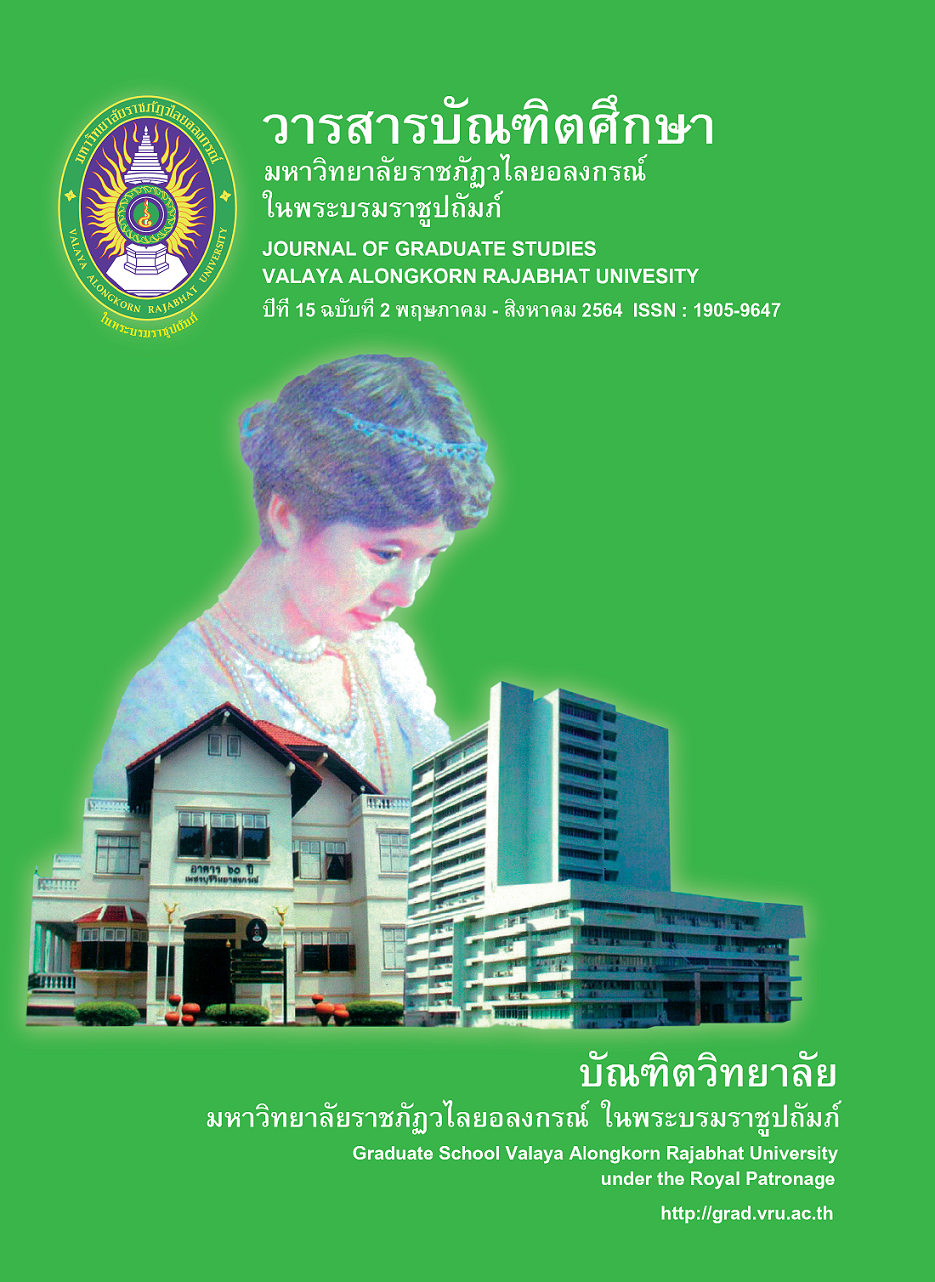GENDER AND SELF DIRECTED LEARNING: CROSS CULTURAL RESEARCH (THAILAND AUSTRALIA)
Main Article Content
Abstract
The main purposes of this research were (1) to study the Self Directed Learning Behavior of males and females (Both as a whole and 8 sub-behaviors) in Thailand and Australia, and compare the Self Directed Learning Behavior between the two countries. The samples were 202 undergraduate students from Mahasarakham University (Thailand) and Monash University Melbourne (Australia); 101 people per each country. Tools used in research consisting of a Self Directed Learning Behavior test. The statistics used were mean, standard deviation, T-test.
The results showed that: 1) The Sample from males and females of both countries had Self Directed Learning Behavior in the overall and each aspects at a medium level. The Sample from Australia males had positive orientation to the future as the samples in Thailand. On the other hands, In the Australia females, were outstanding for their opportunities to learn. The sample from Thailand was outstanding in positive orientation to the future like the male group. 2) The Self Directed Learning Behavior of males and females was significantly different at .05 level in overall and in all sub-behaviors. Sample from Australia had higher levels of Self Directed Learning Behavior than sample from Thailand in 6 aspects from 8 behaviors. The other 2 behavior were not different. In which the female group had the same result.
Article Details
บทความทุกเรื่องได้รับการตรวจความถูกต้องทางวิชาการโดยผู้ทรงคุณวุฒิ ทรรศนะและข้อคิดเห็นในบทความวารสารบัณฑิตศึกษา มหาวิทยาลัยราชภัฏวไลยอลงกรณ์ ในพระบรมราชูปถัมภ์ มิใช่เป็นทรรศนะและความคิดของผู้จัดทำจึงมิใช่ความรับผิดชอบของบัณฑิตวิทยาลัย มหาวิทยาลัยราชภัฏวไลยอลงกรณ์ ในพระบรมราชูปถัมภ์ กองบรรณาธิการไม่สงวนสิทธิ์การคัดลอก แต่ให้อ้างอิงแหล่งที่มา
References
Berry, J. W., Poortinga, Y. H., Breugelmans, S. M., Chasiotis, A. and Sam, D. L. (2012). Cross Cultural Psychology Research and Applications. Cambridge University Press.
Boonchu, N. (1989). laksana kānrīanrū dūai tonʻēng khō̜ng naksưksā mahāwitthayālai rākhamhǣng [Self leaning for student of Ramkhamhaeng University]. Master of Education Bangkok: Silapakon University.
Carson, R. C. (2019). Interaction concepts of personality. New York : Routledge Taylor & Francis Group.
Dao-Tran, H. T., Seib, C., Jones, L., & Anderson, D. (2014). A cross cultural comparison of health related quality of life and its associated factors among older women in Vietnam and Australia. BMC Research Notes. 11(17),1 – 7.
Dowdy, S., Wearden, S. and Chilko, D. (2004). Statistics for research. Thirth edition. New Jersey. Wiley-Interscience A JOHN WILEY & SONS, INC. publication.
Eckensberger, L. H. (1972). The necessity of a theory for applied cross-cultural research. In L.J. Cronbach & P.D. Drenth (eds.), Mental tests and cultural adaptation (pp.99-107). The Hague: Mouton.
Ember, C. R. (2009). Cross-Cultural Research Methods. United States of America. AltaMira Press.
Favaretto, R. M., Musse, S. R. & Costa, A. B. (2019). Emotion, Personality and Cultural Aspects in Crowds: Towards a Geometrical Mind. Switzerland: Springer International Publishing.
Fidell, L. S. and Tabachnick, B. G. (2014). Using Multivariate Statistics Pearson New International Edition. Newyork. Pearson.
Frambach, J. M., Driessen, E. W., Chan, L. C., & Vleuten, C. P. M. (2012). Rethinking the globalisation of problem based learning: how culture challenges self directed learning. Medical Education. 46(8), 738-747.
Healey, J. F. (2015). The Essentials of Statistics: A Tool for Social Research. Boston: Wadsworth Publishing.
Posner, F. G. (1990). A Study of Self Directed Learning, Perceived Competence and Personal Orientation among Students in an Open Alternative High School. Dissertation Abstracts International-A. 53(3),813
Privitera, G. J. (2018). Essential Statistics for the Behavioral Sciences. New York, Sage Publications, Inc.


